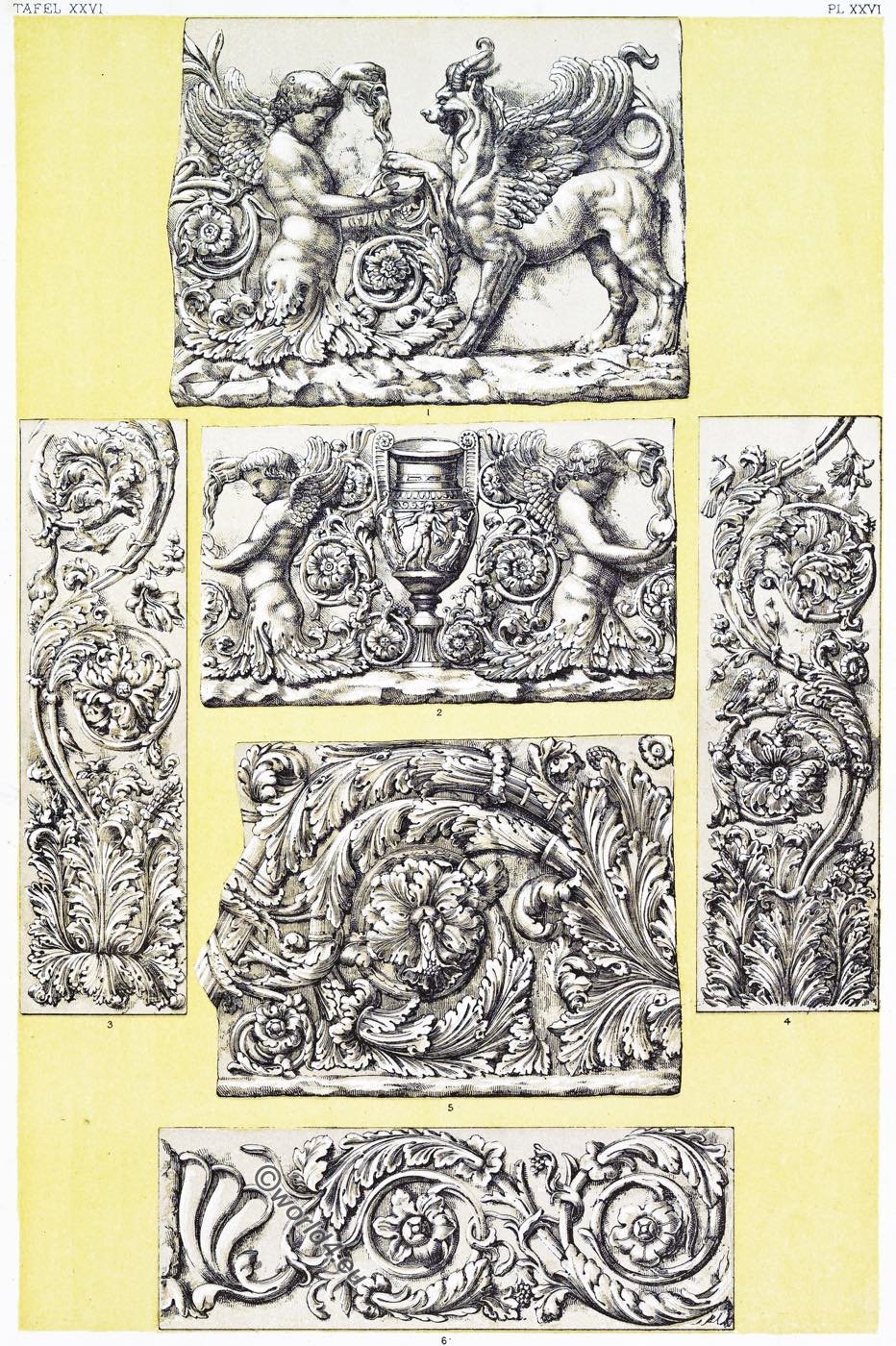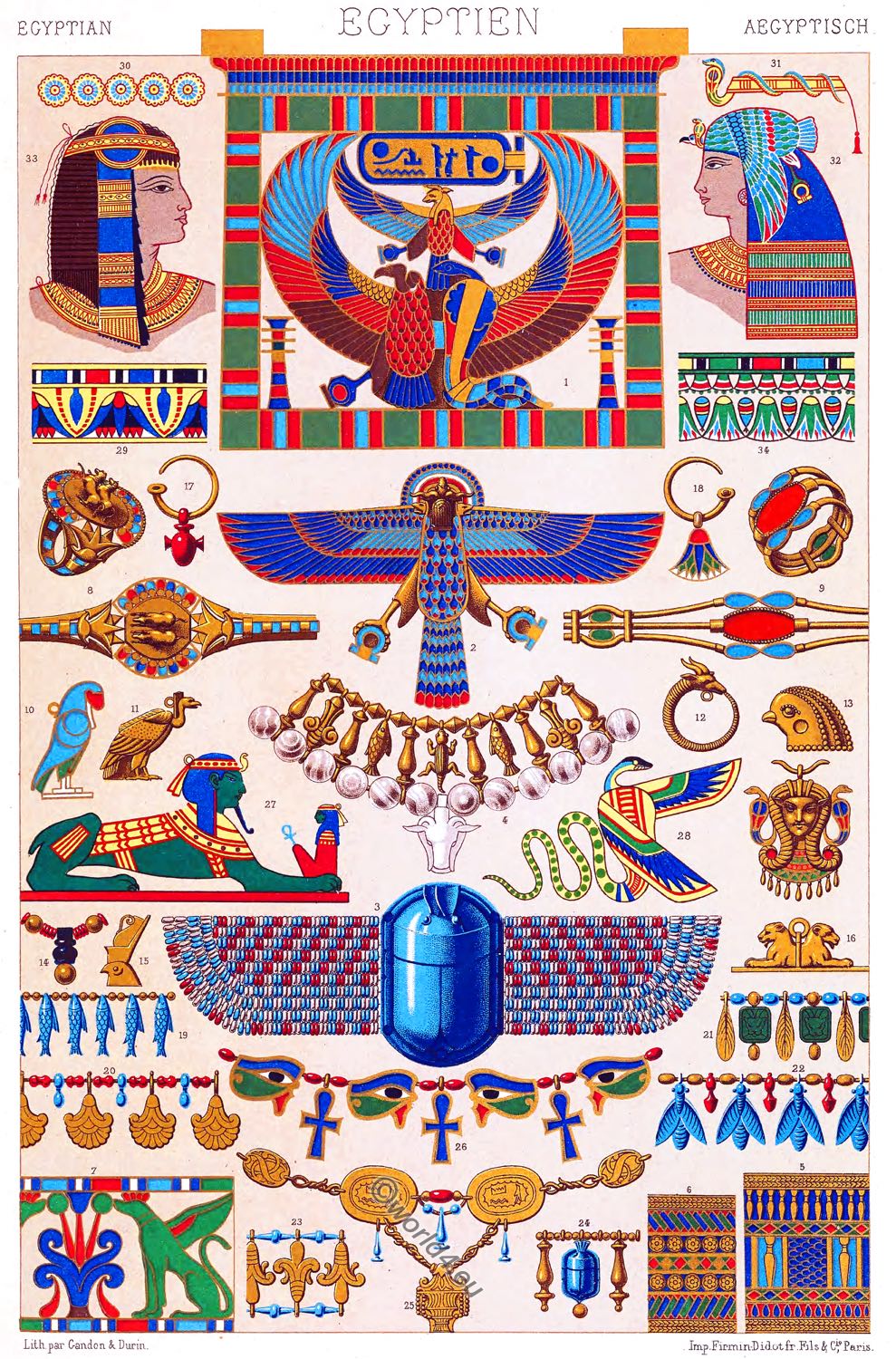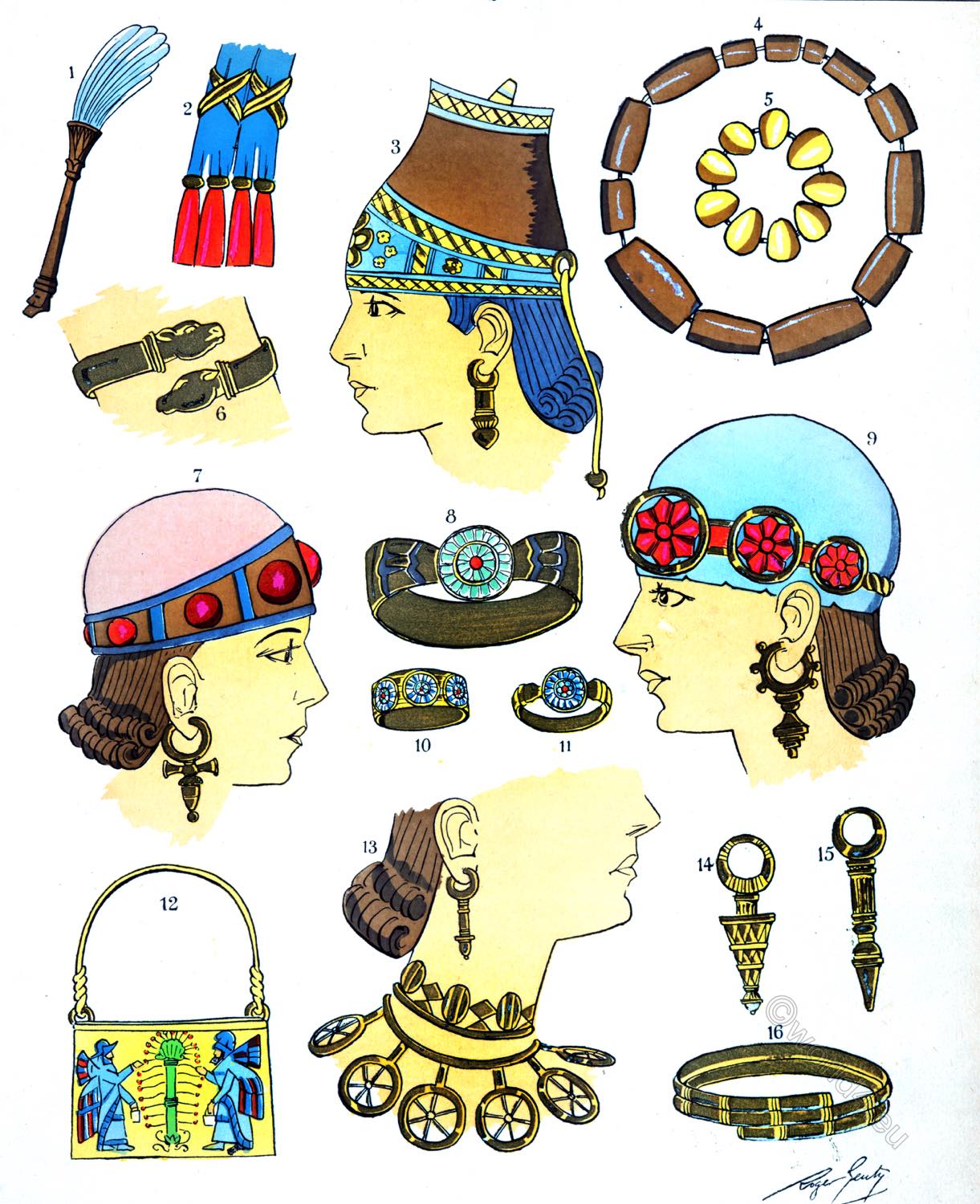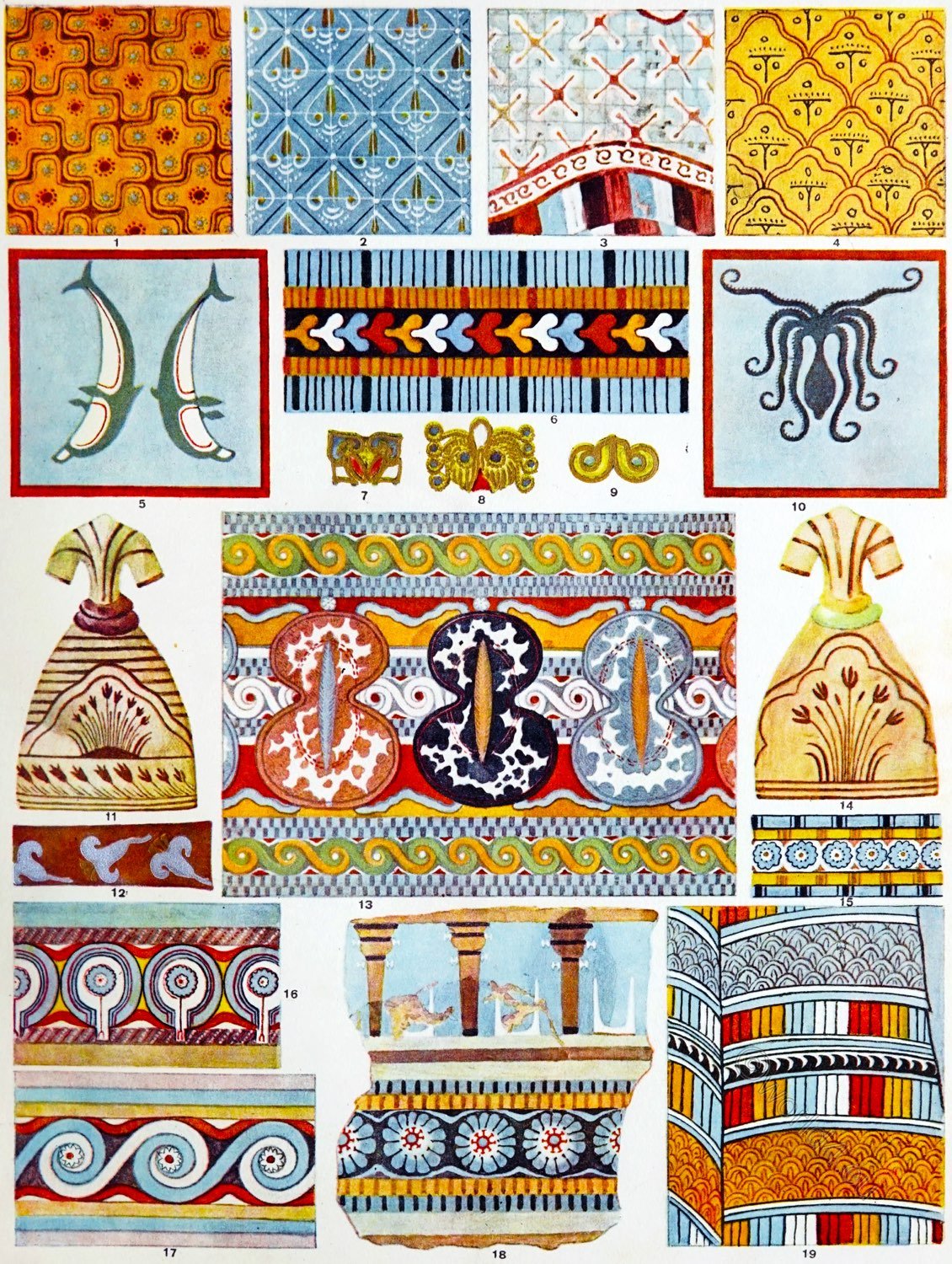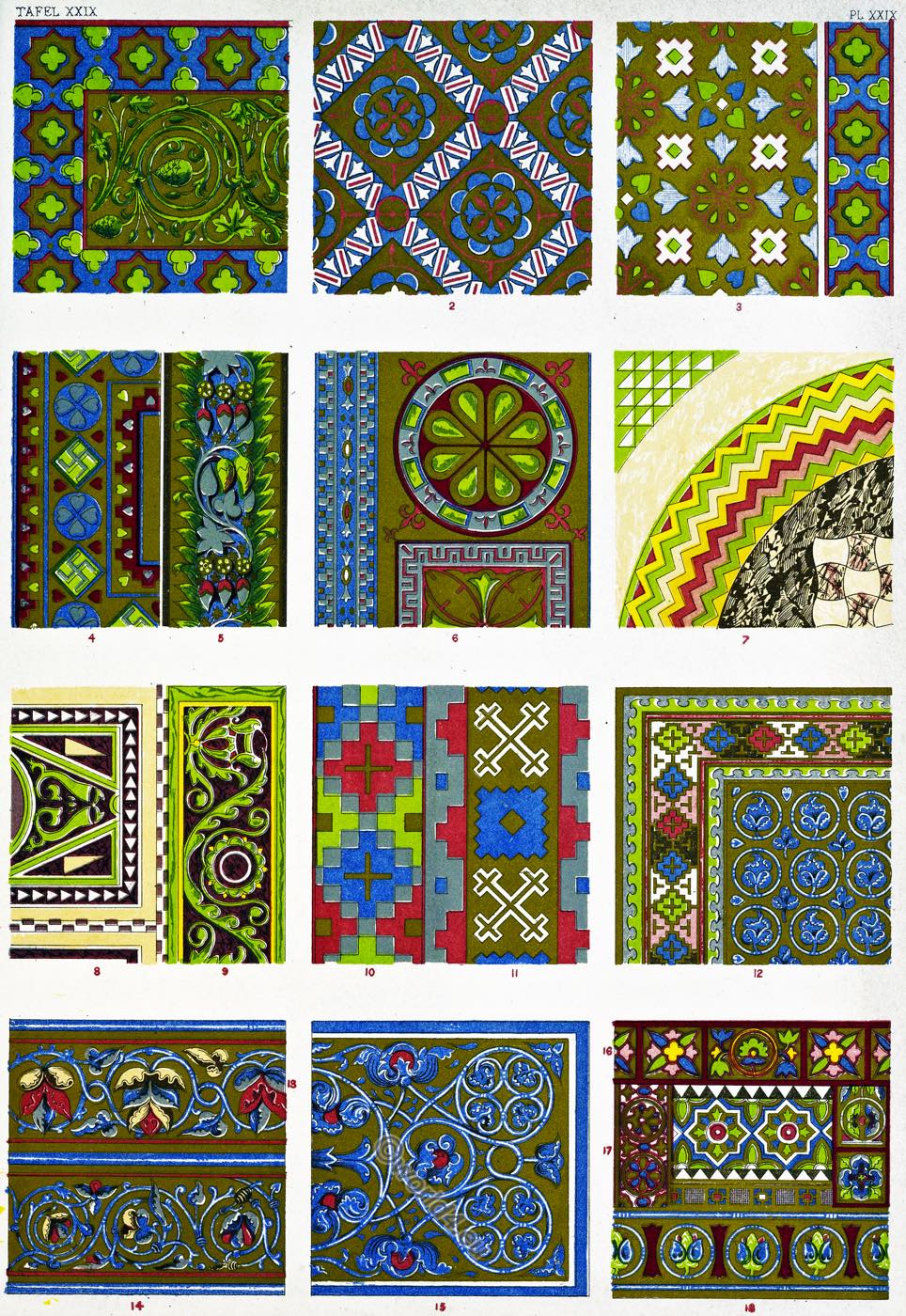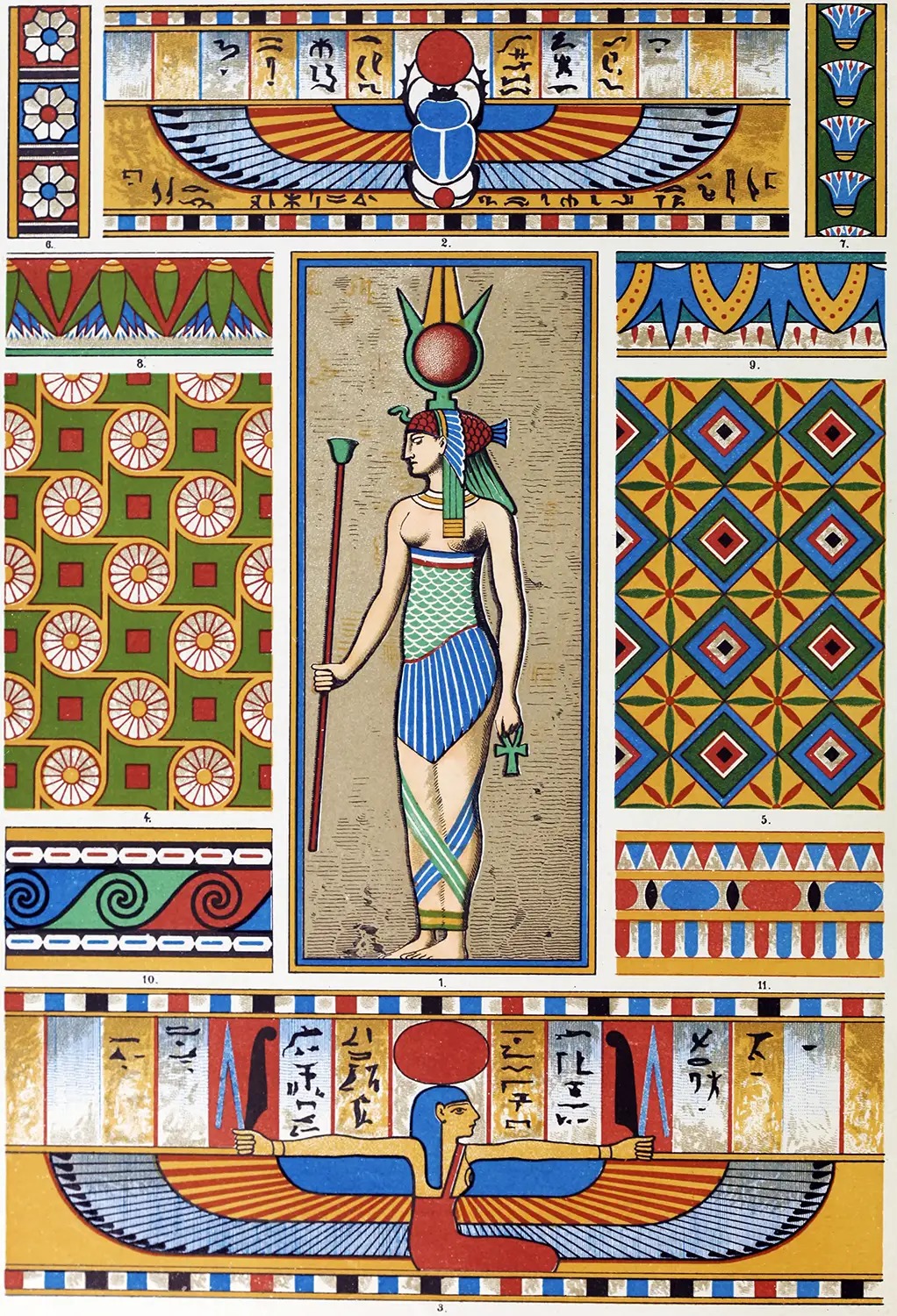
Civilization of ancient Italy. The Etruscans, also obsolete Etrurians, were an ancient people in Etruria who lived in the northern central Italy in the area of today’s regions Tuscany, Umbria and Lazio and called themselves Rasenna according to Dionysios of Halikarnassos. Etruscan culture can be found in this area between 800 BC and the second half of the 1st century BC. After the conquest by the Romans (300 to 90 BC), the Etruscans were largely absorbed into the culture of the Roman Empire.
ETRUSCAN ART. JEWELS.
ALL the objects represented in this plate belong to the Museum of the Louvre; the greater part are in the Campana Collection, and some of the most interesting were found in a tomb at Vulci by MM. Noël des Vergers and Francois. The most ancient among them do not appear to date
further back than the later period of the Roman Republic, but nevertheless Greek and Egyptian influence are noticeable, the latter being especially visible in the frequent use of the scarabæus.
The fibula, consisting of a hand with ring and bracelet, and terminating in the form of a serpent, is considered to be Greek.
The intaglio set in the centre of the bezel of a ring (No.2), also capable of being used as a seal, appears to be of the same origin.
Ear-rings are considered to be the master-pieces of Etruscan jewelry. Those called à selle, a specimen of which may be seen in the subject representing a child suspended, in the upper part of the plate, on the right hand, belong to the best period.
The necklace (No.1) is reduced to one half the size of the original. Nos. 2 and 3 are rings opened out. Nos. 4 and 5 represent heads of hair-pins. Nos. 6 and 7 are ear-rings reduced in size. The hand of Venus holding the apple of Paris is probably Greek.
In some of the objects, of which the use is uncertain, the influence of the later Byzantine and Gothic periods may be recognized, and it is therefore doubtful whether they can be attributed to the Etruscans.
Source: Polychromatic ornament by Auguste Racinet. London, H. Sotheran and Co., 1877.
Related
Discover more from World4 Costume Culture History
Subscribe to get the latest posts sent to your email.

